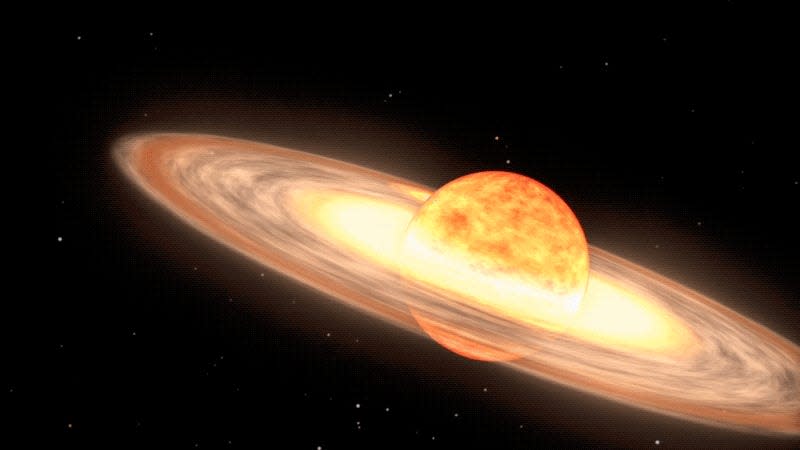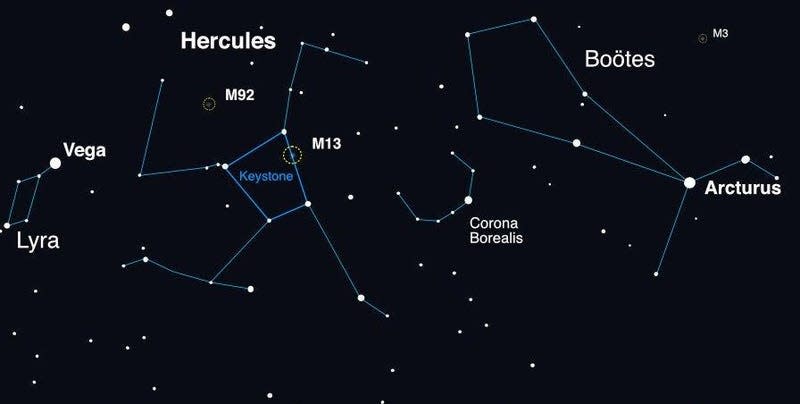Move Over Eclipse, a New Celestial Wonder Is Set to Take Center Stage

T Coronae Borealis, a binary star system located 3,000 light-years from Earth, is a ticking time bomb waiting to explode. And if the recurring nova follows its usual pattern, we can expect to see a new, albeit temporary, star appearing in our night sky any day now.
The moderator of a citizen scientist group I belong to recently emphasized, “T CrB remains our highest priority target every night.” His urgency is understandable; our “Cosmic Cataclysms” group needs to be on the lookout for the expected nova, gathering data before, during, and after the explosion. It could appear at any moment, offering astronomers, whether amateur or professional, the chance to witness and study a rare and spectacular event as it unfolds in real-time.
The data gathered from this event is set to improve our understanding of binary star system dynamics and the intricate life cycle of stars. Very cool. But what’s just as cool is that the nova is expected to be exceptionally bright. So bright, in fact, that it’ll be visible to the unaided eye and appear as a new star in the sky, at least for a few days.
Once it’s visible, and should you get the chance to see it, you can claim to have witnessed a runaway thermonuclear reaction from a distance of 3,000 light-years. Adding this to my recent naked-eye achievements is the plan—the most recent happened during the April 8 total solar eclipse. Like millions of others, I spotted prominences, appearing as bright red dots, during totality.
T Coronae Borealis (T CrB), also known as the Blaze Star, last exploded in 1946, and it does so at roughly 79-year intervals. The current window opened this past February and will continue into the spring and summer. T CrB, one of only five known recurring nova in the Milky Way galaxy, is a binary star system consisting of a heavy white dwarf and a red giant. They’re separated by only 0.54 astronomical units, about the same as the distance from the Sun to Venus, and their close encounters have turned T CrB into a ticking time bomb.
White dwarfs are the end stages of medium-sized stars, but this particular white dwarf, roughly 1.37 times the mass of our Sun, is racing towards the Chandrasekhar limit—an astronomical boundary at approximately 1.4 solar masses, beyond which white dwarfs become unstable.
The red giant, roughly 1.12 times the mass of our Sun, orbits the white dwarf every 227 days, placing it within its Roche lobe, a boundary where its material starts spilling onto its nearby companion. This process forms an accretion disk around the white dwarf—a swirling vortex of stellar material.
When enough hydrogen from the red giant accumulates on the white dwarf’s surface, it heats up to extreme temperatures. This intense heat triggers a runaway thermonuclear reaction, turning the accumulated hydrogen into a cosmic fireworks display known as a nova. In the case of T CrB, this explosive event repeats once every 79 years or so. Which is…looks at watch…..right about now.

At a magnitude of +10, T Coronae Borealis is currently invisible to the unaided eye. The pending explosion, however, will elevate the star system to magnitude +2, a brightness akin to Polaris, otherwise known as the North Star. The system, visible to observers in the Northern Hemisphere, is located in the Corona Borealis constellation. This constellation forms an arc shape, and once it’s visible, T CrB will temporarily make its appearance in this part of the night sky.
In the days and weeks after its anticipated outburst, T CrB will gradually dim, returning to its low-level brightness. It will remain visible to the unaided eye for several days following the explosion, and through telescopes and binoculars for just over a week. After this period, the star system will revert back to its quiet phase. Rinse, repeat, exploding again, likely in 2103. As for the nova expected at some point this year, I will heed the advice of our moderator, and make this my highest priority target.
More: Astronomers Watch in Real Time as Epic Supernova Potentially Births a Black Hole

